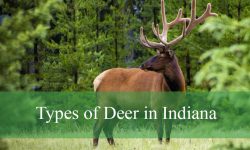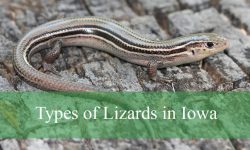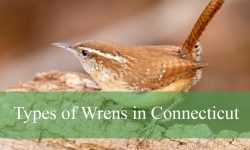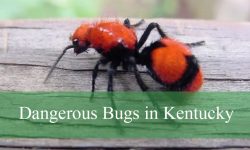Blue butterflies bring a touch of elegance to Virginia, standing out as some of the state’s most delicate and striking insects. Their shimmering wings brighten up woodlands, meadows, and even suburban gardens, making them favorites among butterfly watchers.
With several species of azures, hairstreaks, and elfins, Virginia is home to a surprising variety of these tiny yet vibrant pollinators. Each has its own unique timing, preferred habitat, and host plants, which makes learning about them especially rewarding for nature enthusiasts.
From the widespread Eastern Tailed-Blue to the rarer Silvery Blue, these butterflies appear throughout the seasons, offering opportunities for observation from early spring to late fall. This guide introduces the 12 most common blue butterflies in Virginia, with pictures and identification details to help you recognize them in the wild.
Types of Blue Butterflies Found in Virginia
Eastern Tailed-Blue (Cupido comyntas)

The Eastern Tailed-Blue is one of the most widespread and recognizable blue butterflies in Virginia. Its wings shimmer with a soft sky-blue color in males, while females often appear duller with brownish tones. A small but distinctive feature is the tiny orange spot near the tail on the hindwings, which helps in quick identification. These butterflies are active fliers and are often seen in meadows, roadsides, and suburban gardens.
In spring and summer, the Eastern Tailed-Blue thrives in open grassy areas where its host plants—mainly legumes like clovers and alfalfa—are abundant. Adults frequently nectar on a variety of small wildflowers, making them important contributors to pollination. Their adaptability allows them to be found in both rural and urban settings throughout Virginia.
Their flight pattern is quick and erratic, often darting low to the ground, which makes them harder to follow. Males can be seen patrolling territories in search of females, while females spend more time near host plants where they lay their eggs. The tiny green caterpillars feed on buds and flowers of legumes before pupating.
Eastern Tailed-Blues have multiple broods from spring through fall, making them common across the seasons. They are among the first blue butterflies that many Virginians notice due to their abundance and visibility. Observing them requires no special effort—simply walking along a sunny path or lawn is enough to spot this small, active butterfly.
Spring Azure (Celastrina ladon)
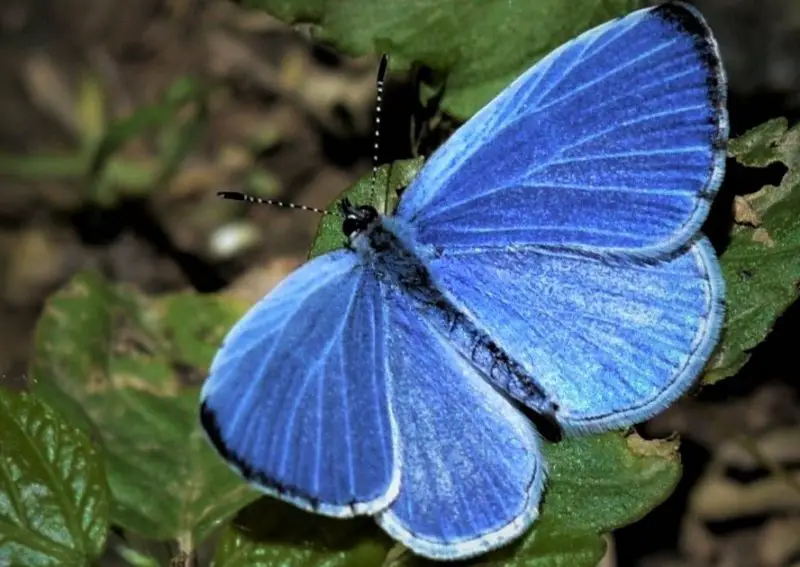
The Spring Azure is one of the earliest butterflies to emerge in Virginia, usually appearing as soon as the weather warms in March and April. Its wings are a light, powdery blue with subtle black margins, while the underside is pale gray with small black spots. This delicate butterfly is often confused with other azure species, but its timing in early spring is a key clue for identification.
Habitat preferences include woodland edges, trails, and shrubby areas where host plants are plentiful. Spring Azures often use flowering dogwoods, New Jersey tea, and viburnums as host plants for their caterpillars. Adults are commonly seen nectaring on early-blooming flowers like violets, dandelions, and cherry blossoms.
Their behavior is typically gentle, with fluttery flights close to shrubs and trees. Unlike some other blues, they do not linger in wide open meadows but instead keep near wooded habitats. Males are often observed patrolling pathways and sunny clearings to locate females, adding a lively touch to early spring walks in the forest.
The Spring Azure is important for its role as one of the first butterflies to reappear after winter. Its emergence signals the start of butterfly season in Virginia. Because it overlaps with other azure species, careful observation of flight timing and subtle wing patterns helps naturalists tell it apart.
Summer Azure (Celastrina neglecta)
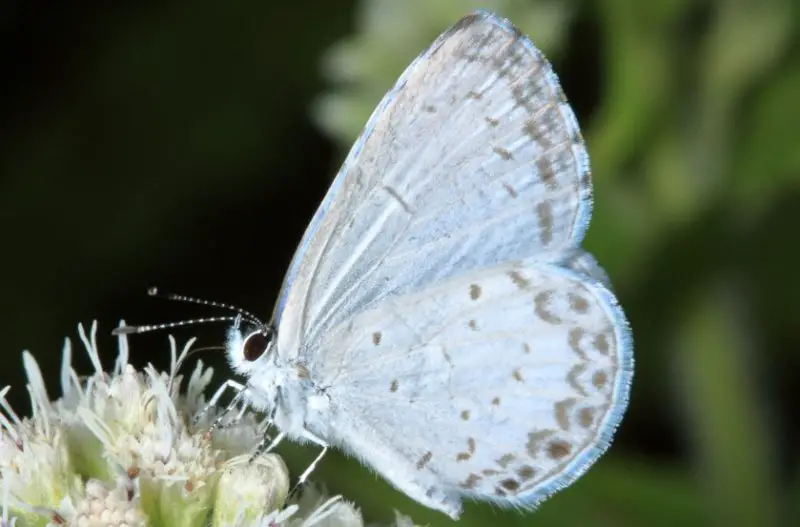
The Summer Azure is a later-season counterpart to the Spring Azure, flying from late May through early fall. This butterfly displays a brighter blue coloration than its spring relative, with slightly broader dark borders along the wing edges. On the underside, it appears pale grayish-white with faint spotting. Its distinction comes from both timing and its lighter underside compared to other azures.
These butterflies inhabit open woodlands, gardens, and fields, often near flowering shrubs. Host plants include dogwoods, viburnums, and spiraea, where females lay their eggs. The caterpillars are green and well-camouflaged against flower buds and foliage, making them difficult to spot in the wild.
Summer Azures are more likely to be seen in urban and suburban environments compared to some of the more habitat-specific azures. They readily visit garden flowers such as milkweed, asters, and clovers, making them accessible to butterfly watchers in many neighborhoods across Virginia.
Because they fly throughout the warmer months, Summer Azures contribute significantly to pollination. Their extended flight season allows observers to enjoy their presence long after the early-spring butterflies have disappeared. Watching them flutter across gardens or woodland edges is one of the delights of Virginia summers.
Appalachian Azure (Celastrina neglectamajor)
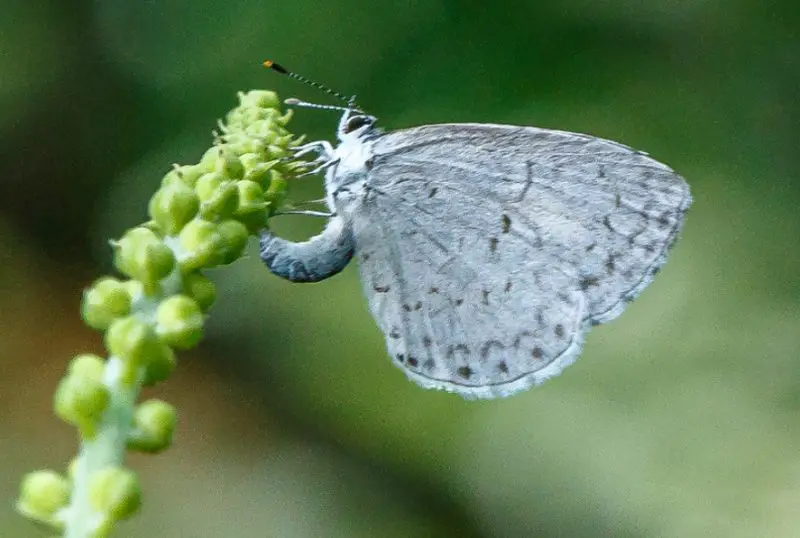
The Appalachian Azure is a rare and localized butterfly in Virginia, often considered a regional specialty. Larger than most other azures, it has bright blue wings with reduced dark margins, giving it a more vivid appearance. The underside is pale with minimal markings, helping distinguish it from the dusky-toned species. Its larger size is often the first clue for butterfly enthusiasts.
This butterfly is strongly associated with black cohosh (Actaea racemosa), a native wildflower found in Appalachian forests. Females lay their eggs exclusively on this plant, making the butterfly highly habitat-specific. Because of this dependence, the Appalachian Azure is often restricted to mature woodland areas where black cohosh thrives.
Their flight occurs in late spring to early summer, overlapping with the blooming of black cohosh. They are not commonly seen outside their specialized habitats, which makes spotting them a rewarding experience for naturalists and butterfly enthusiasts. Observers often seek them out along mountain trails and shaded forest paths.
The Appalachian Azure’s limited range and dependence on specific plants make it vulnerable to habitat loss. Conservation of native forests and wildflower diversity is key to ensuring its survival in Virginia. Seeing one of these butterflies in the wild is a reminder of the delicate balance between butterflies and their ecosystems.
Holly Azure (Celastrina idella)
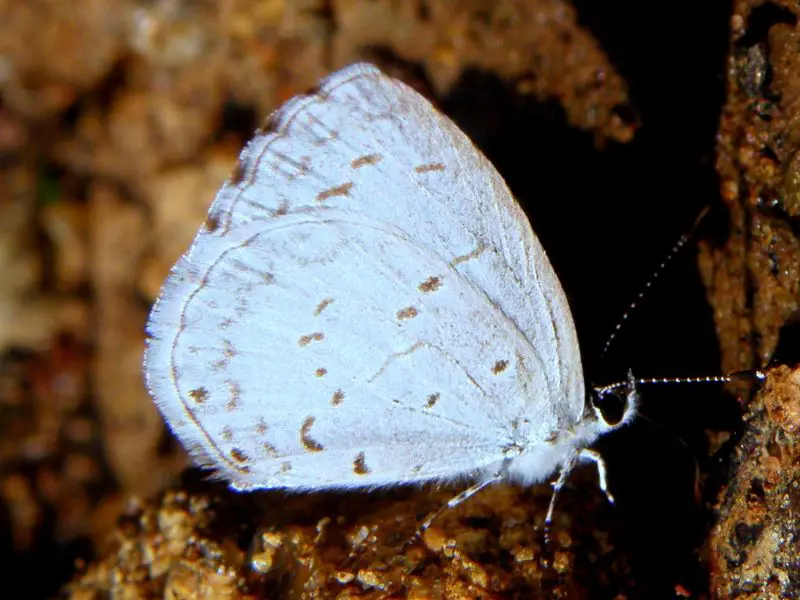
The Holly Azure is another early-season blue butterfly in Virginia, closely tied to American holly and other hollies. It appears in late winter to early spring, even before many other azures have emerged. Its wings are light blue with fine dark borders, and the underside is pale gray with fewer markings compared to other azure species.
Its life cycle is tightly linked to hollies, particularly American holly and yaupon holly. The females lay their eggs on the flower buds of these plants, and the green caterpillars feed on the blossoms. This close association makes the Holly Azure an interesting example of host-plant specialization among butterflies.
Holly Azures prefer woodlands, swamps, and thickets where holly plants are naturally abundant. They can also be seen along forest edges and shaded trails in early spring. Their presence is often noted around blooming holly trees, where they flutter gently among the branches.
As one of the first blue butterflies to appear in the year, the Holly Azure adds color to late winter landscapes. Its dependence on holly plants means that conserving native vegetation directly supports its populations. Observing these delicate butterflies in early spring is a special experience for Virginia butterfly watchers.
American Holly Azure (Celastrina idella)
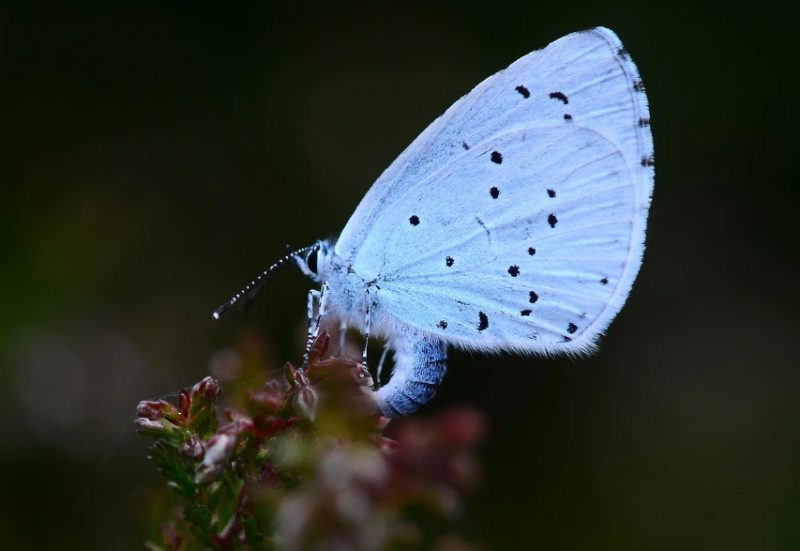
The American Holly Azure is often treated as a separate species from the Holly Azure, though some experts group them together. This butterfly is closely tied to holly plants, particularly American holly (Ilex opaca). Its wings are light blue with delicate gray undersides that display faint spotting, giving it a softer appearance compared to other azures.
Emerging in early spring, it is among the first butterflies seen in Virginia each year. The species is known for its specialized breeding behavior, as females deposit their eggs on holly flower buds. The larvae feed on these blossoms, ensuring their survival in habitats where holly is abundant.
American Holly Azures are often found in swamps, woodland edges, and shady forests rich in holly trees. Their flight is light and fluttery, usually staying close to the canopy or shrubby areas where their host plants grow. Observers may spot them around blooming hollies in late March and April.
This butterfly’s dependence on holly plants makes it vulnerable to habitat changes. Protecting holly-rich woodlands is essential to maintaining stable populations. For nature lovers, spotting this delicate azure in Virginia is a reminder of the intricate relationships between butterflies and their host plants.
Dusky Azure (Celastrina nigra)
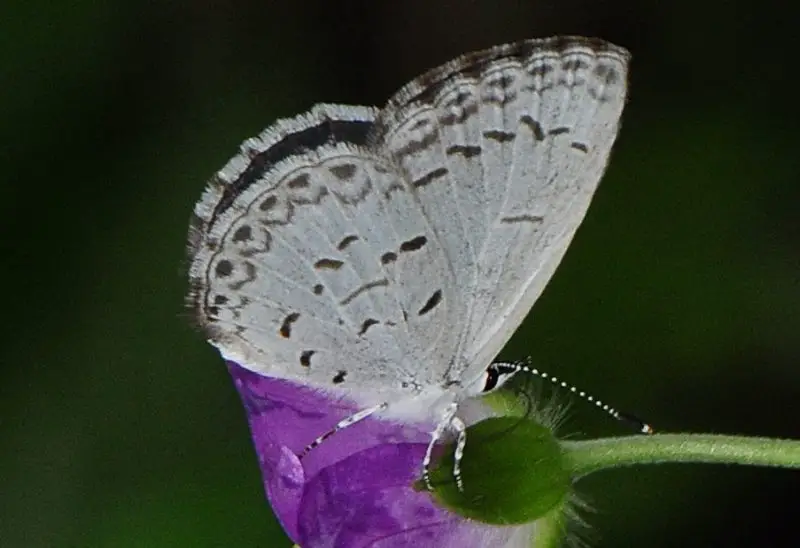
The Dusky Azure is a unique member of the azure group, easily recognized by its darker, slate-gray wings compared to the brighter blues of other azures. Its muted appearance sets it apart, making it a fascinating butterfly for enthusiasts seeking variety in Virginia’s woodlands.
This species prefers moist, shaded environments such as stream valleys, forest edges, and wet thickets. It has a strong connection with black cohosh (Actaea racemosa), where females lay their eggs. The caterpillars feed on cohosh flowers and buds, following a highly specialized life cycle.
Dusky Azures typically emerge in early to mid-spring, overlapping with the blooming of their host plants. Their flight is less showy and more subdued, with individuals staying close to shaded forest areas rather than open fields. This makes them harder to observe compared to their brighter relatives.
Because of their specific habitat requirements, Dusky Azures are considered less common than other blue butterflies in Virginia. Conservation of woodland habitats and wildflower diversity is vital to support their populations. Their subdued beauty represents a different side of the azure family.
Gray Hairstreak (Strymon melinus)
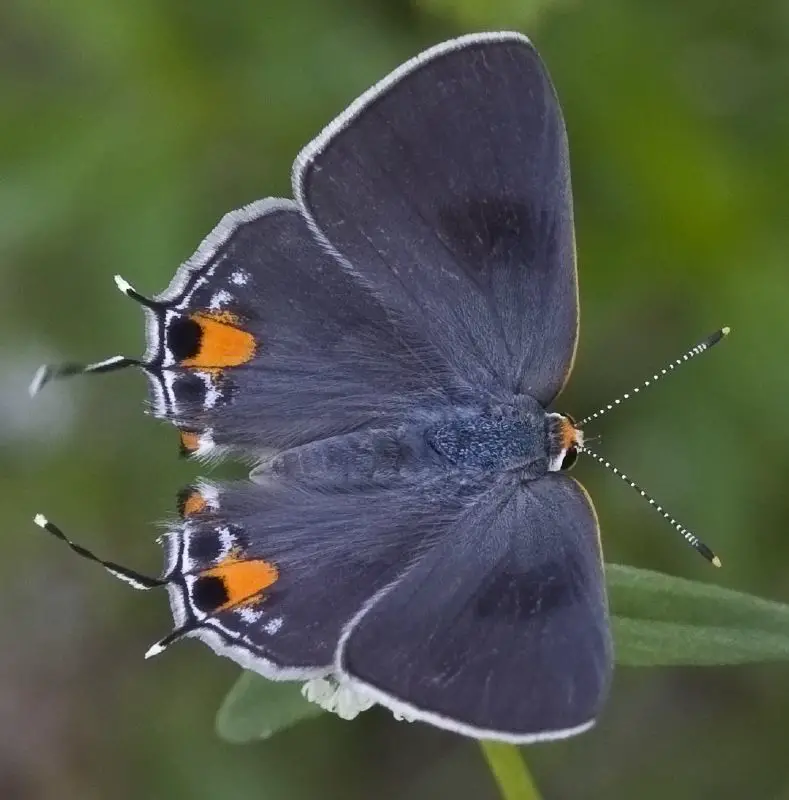
The Gray Hairstreak is not a true “blue,” but it carries a bluish-gray sheen that makes it relevant to this group. It is one of the most widespread hairstreaks in North America and can be found throughout Virginia. Its wings are gray with orange spots near the tails, and it has delicate, threadlike tails that resemble antennae.
This butterfly is a generalist, using a wide variety of host plants including legumes, mallows, and cotton. Its adaptability allows it to thrive in fields, gardens, orchards, and even roadsides. Adults nectar on a broad range of flowers, making them frequent visitors to backyard gardens.
Gray Hairstreaks are known for their “false head” defense strategy. The tails and orange spots on the hindwings mimic a butterfly’s head, confusing predators like birds and spiders. When perched, they often rub their hindwings together, enhancing this illusion.
Unlike many azures, the Gray Hairstreak flies well into late summer and fall. Its wide distribution and long flight season make it one of the most commonly encountered hairstreaks in Virginia. Its shimmering gray-blue wings add a subtle but charming splash of color to the landscape.
Silvery Blue (Glaucopsyche lygdamus)
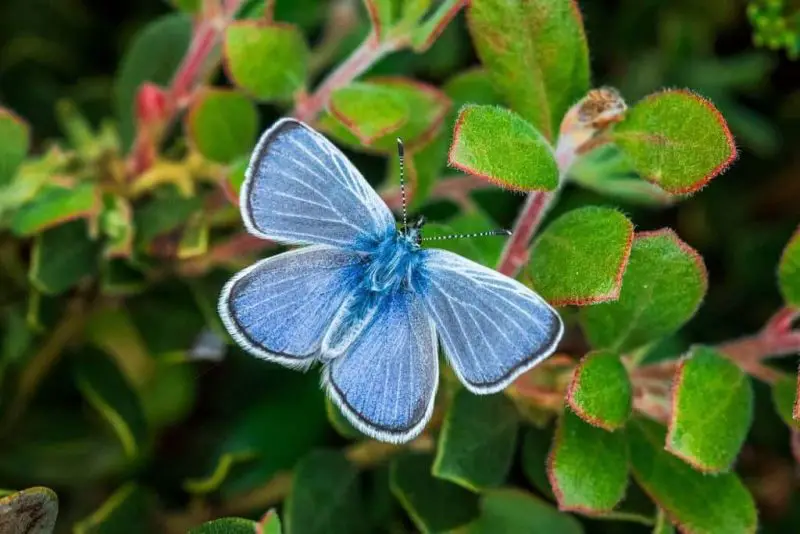
The Silvery Blue is a rare butterfly in Virginia, with only scattered records from certain habitats. True to its name, it has a stunning silvery-blue upperwing with dark borders, making it one of the most striking members of the blue family. Its undersides are pale with dark spots, a helpful identification feature.
This butterfly is strongly associated with legumes, particularly wild lupines, vetches, and clovers. Females lay their eggs on the flower buds of these plants, and caterpillars feed on the developing blossoms. Because its host plants are limited in Virginia, populations of Silvery Blues are small and localized.
Their habitats include meadows, open woodlands, and disturbed areas where lupines or clovers thrive. They tend to fly low over the vegetation, making short, gliding movements. Adults are often observed nectaring on a wide range of flowers, from wild indigo to goldenrods.
The rarity of the Silvery Blue in Virginia makes every sighting significant. For naturalists, encountering this butterfly is a highlight, as it reflects both habitat health and plant diversity. Conservation of native legumes and open meadow habitats is essential to preserving this delicate species.
Northern Azure (Celastrina lucia)
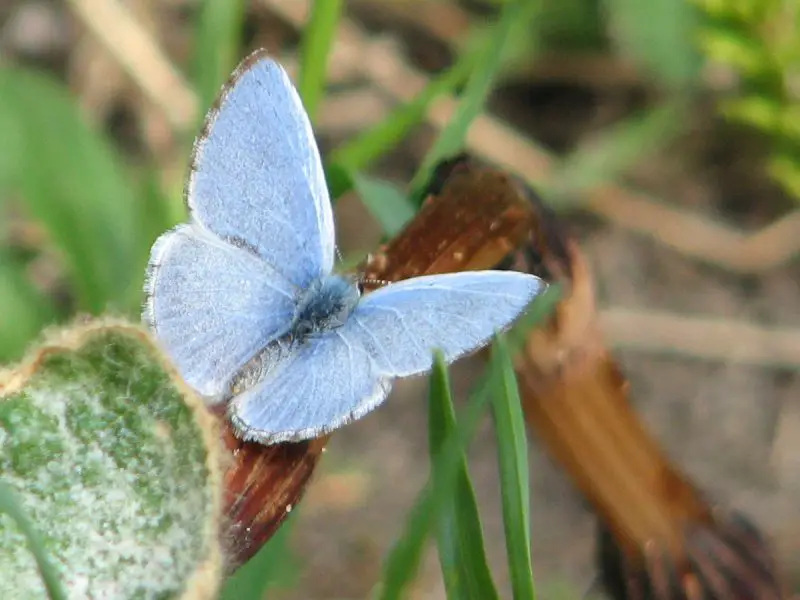
The Northern Azure is a spring-flying butterfly that often overlaps in range with the Spring Azure, making identification tricky. It is slightly darker on the upperside, with bluish-gray wings edged in black. The underside is marked with more distinct dark spots compared to other azures, which helps separate it from similar species.
In Virginia, the Northern Azure favors moist woodland areas, stream edges, and shrubby habitats. Its caterpillars feed on a variety of host plants, including dogwoods, viburnums, and meadowsweet. Adults nectar on spring wildflowers such as violets, dandelions, and cherry blossoms, making them active early-season pollinators.
The flight season is concentrated in early spring, generally from March through April. During this time, males patrol open paths and sunny woodland clearings, while females search for host plants where they can deposit eggs. Their delicate movements often go unnoticed unless carefully observed.
Northern Azures contribute to the diversity of early spring butterflies in Virginia. Because they resemble other azure species, close attention to timing, wing markings, and habitat is necessary to identify them correctly. Their presence highlights the richness of Virginia’s butterfly fauna during the changing seasons.
Cherry Gall Azure (Celastrina serotina)
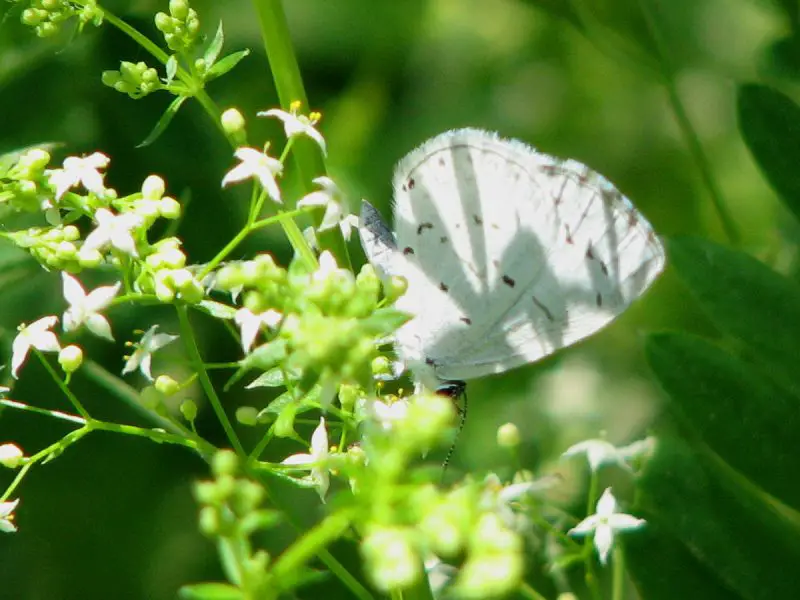
The Cherry Gall Azure is a later-emerging species within the azure group, closely tied to black cherry trees. Its wings are bright blue above with narrow dark borders, while the underside is pale with scattered dark spots. The species gets its name from the fact that caterpillars feed inside galls on cherry trees caused by midges.
This butterfly prefers woodlands, thickets, and areas where cherry trees are common. Females lay their eggs on developing cherry galls, and the larvae feed within them, protected from predators. This unusual life cycle sets the Cherry Gall Azure apart from other azures, which typically use flowers or leaves as larval food sources.
Adults fly later than most azures, with peak activity from late May into June. Their flight is low and fluttery, often near cherry trees. Males are frequently seen patrolling sunny clearings, while females stay closer to host plants.
Because of its specialized dependence on cherry trees and galls, the Cherry Gall Azure is more localized in Virginia. Observers who know where to look can find them reliably in cherry-rich habitats, making them an interesting target for butterfly enthusiasts.
Best Time and Places to Observe Blue Butterflies in Virginia
Seasonal Activity
Blue butterflies in Virginia are active from early spring through late fall, with different species appearing at different times. The earliest to emerge are Holly Azures and Spring Azures, often flying as early as March. Summer Azures and Gray Hairstreaks dominate from late spring into the hot summer months, while species like the Cherry Gall Azure appear later in May and June. Multiple broods allow common species like the Eastern Tailed-Blue to be seen throughout the warmer months.
Best Habitats
The best places to observe blue butterflies in Virginia include woodland edges, meadows, gardens, and forest trails. Azures are strongly associated with host plants such as dogwoods, hollies, and viburnums, while hairstreaks and elfins often stay close to pines or open fields. Rare species like the Silvery Blue may only be spotted in specialized meadows where lupines or clovers grow.
Observation Tips
To see the greatest variety, plan butterfly walks during sunny, calm mornings when butterflies are most active. Early spring visits to woodlands can reveal azures, while summer meadow walks are ideal for hairstreaks and tailed-blues. Bringing binoculars or a camera with a macro lens helps in identifying small species that fly quickly or perch briefly.
FAQs about Blue Butterflies in Virginia
What is the most common blue butterfly in Virginia?
The Eastern Tailed-Blue is the most common and widespread blue butterfly in Virginia, often seen in gardens, fields, and roadsides throughout the warm months.
Are all blue butterflies actually blue?
Not always. Males usually have brighter blue wings, while females often appear duller with gray or brown tones. Some hairstreaks and elfins show only subtle blue iridescence depending on light conditions.
When is the best time to see blue butterflies in Virginia?
The best time is from March through September, with different species peaking in different months. Spring Azures appear in early spring, while Eastern Tailed-Blues and Gray Hairstreaks can be observed all summer.
Where should I go to find rare species like the Silvery Blue?
Silvery Blues are rare in Virginia but may be found in open meadows with wild lupines or clovers. Appalachian Azures are best found in mountain forests with black cohosh, while Cherry Gall Azures are tied to black cherry trees.
How can I tell the different azure species apart?
Identification relies on a combination of flight timing, host plants, and subtle wing patterns. For example, Holly Azures emerge very early, Cherry Gall Azures are linked to cherry galls, and Appalachian Azures are larger and tied to black cohosh.


